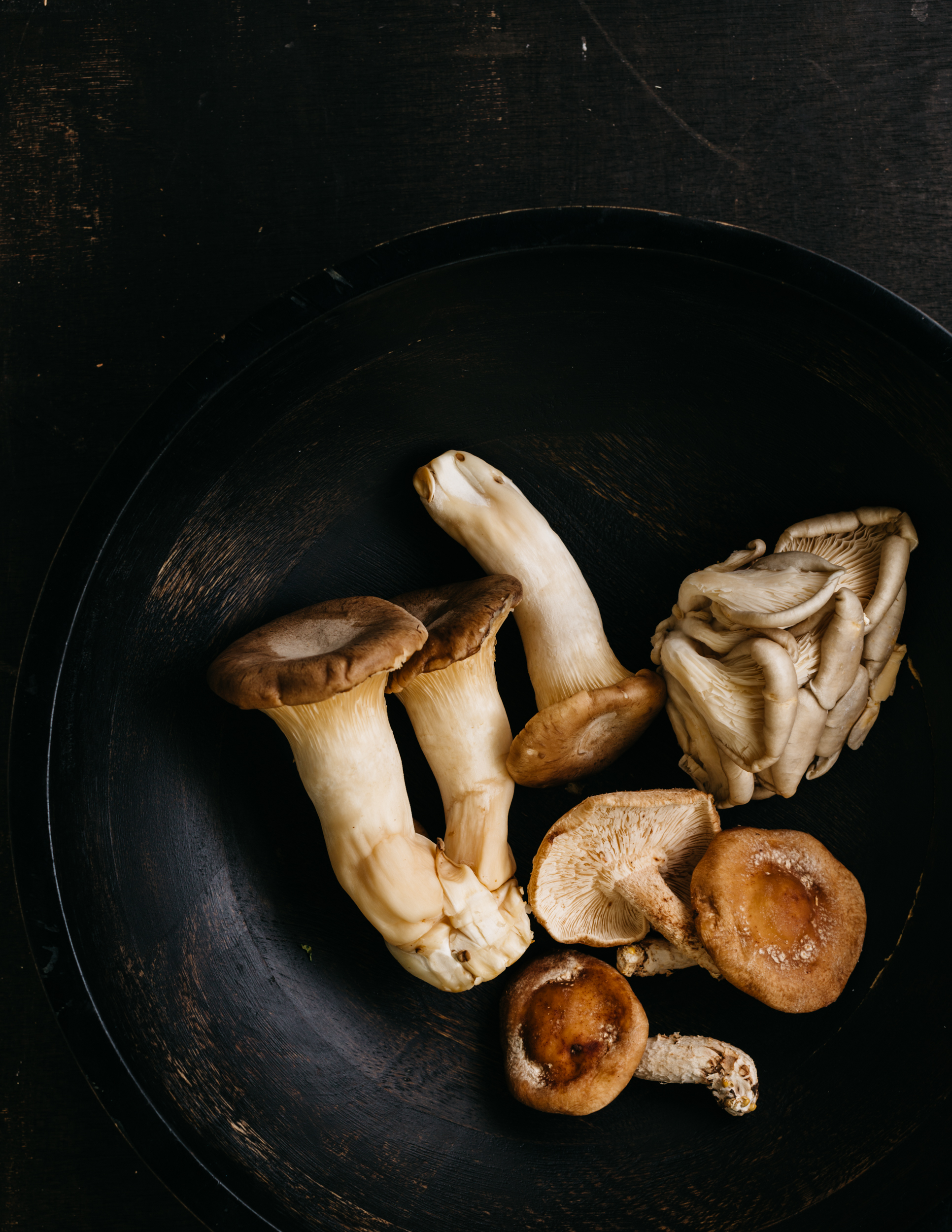One Ingredient: Mushrooms
Photo by Michael Piazza / Styled by Catrine Kelty
I remember an old episode of “Iron Chef: Battle Mushroom” in which Chairman Kaga relates what he says is wisdom from French chefs: In order to properly prepare mushrooms, one must “never let them take a bath.” The camera cuts to a glamor shot of somebody delicately wiping a mushroom cap with a damp cloth, and for many years this was my guide to cleaning and preparing mushrooms. Every time I cooked them, I heard the Chairman’s voice telling me to never let them take a bath.
Years later, while staging at a restaurant, the chef had me clean a case of gorgeous locally foraged mushrooms by first unceremoniously dumping them into a giant sink full of water. So much for the wisdom of the Chairman. His method is more poetic, certainly, but not the most pragmatic. Since then I’ve been a little more loose in my mushroom cleaning rules.
My introduction to wild mushrooms came, as it may have for others in the Boston area, via the local mycological enthusiast admiringly known as the Mushroom Man. His name has appeared modifying “mushrooms” on menus around town since long before identifying sources and purveyors was trendy. This is, of course, Benjamin Maleson, whose name is synonymous with mushrooms in Greater Boston. While working in restaurant kitchens throughout my teens and early 20s, every so often a bearded, almost wizard-like figure in a stylish cap would appear in the kitchen with a selection of foraged mushrooms. I remember when I learned that this was none other than the “Ben” of “Ben’s Mushrooms” fame—an early celeb sighting for a young cook.
Since the 1990s and early 2000s, there is not only an increased awareness about wild mushrooms, there are also more opportunities for curious home cooks to experiment with previously more elusive varieties. In Boston-area farmers markets, most cultivated mushrooms come from Mycoterra Farm, a Westhampton enterprise growing mushrooms year-round using sustainable methods. It’s exciting to have a Massachusetts source for thoughtfully farmed and curated mushrooms, surrounded by like-minded purveyors at local markets. And so long as you’re not spending hours delicately sponge-bathing mushrooms, cooking with them is easy, unfussy and rewarding.
Autumn is without a doubt one of the year’s finest seasons in which to cook and eat mushrooms, and I know I’m not alone in associating fungi and fall. Of course there are mushrooms in other seasons—morels in spring, chanterelles in summer—but in all honesty, I can’t afford them! And I would forage, but the serious mycologists can be secretive and territorial; the added worry of potential poisoning keeps me from heading to the woods for my mushrooms. So I commune with the oysters, shiitakes and king trumpets by way of talented cultivators—they’re cleaner, anyway.
Most of these recipes call for these three varieties, as they are the most commonly available at farmers markets and grocery stores. Mycoterra offers several other fascinating kinds, such as lion’s mane, which look like anemones, and enoki mushrooms, which are native to East Asia. If you see a type at the market that strikes your fancy, chances are it will work in any of the following dishes. In other words: Pick your poison. Just, you know, not literally.
This story appeared in the Fall 2017 issue.






